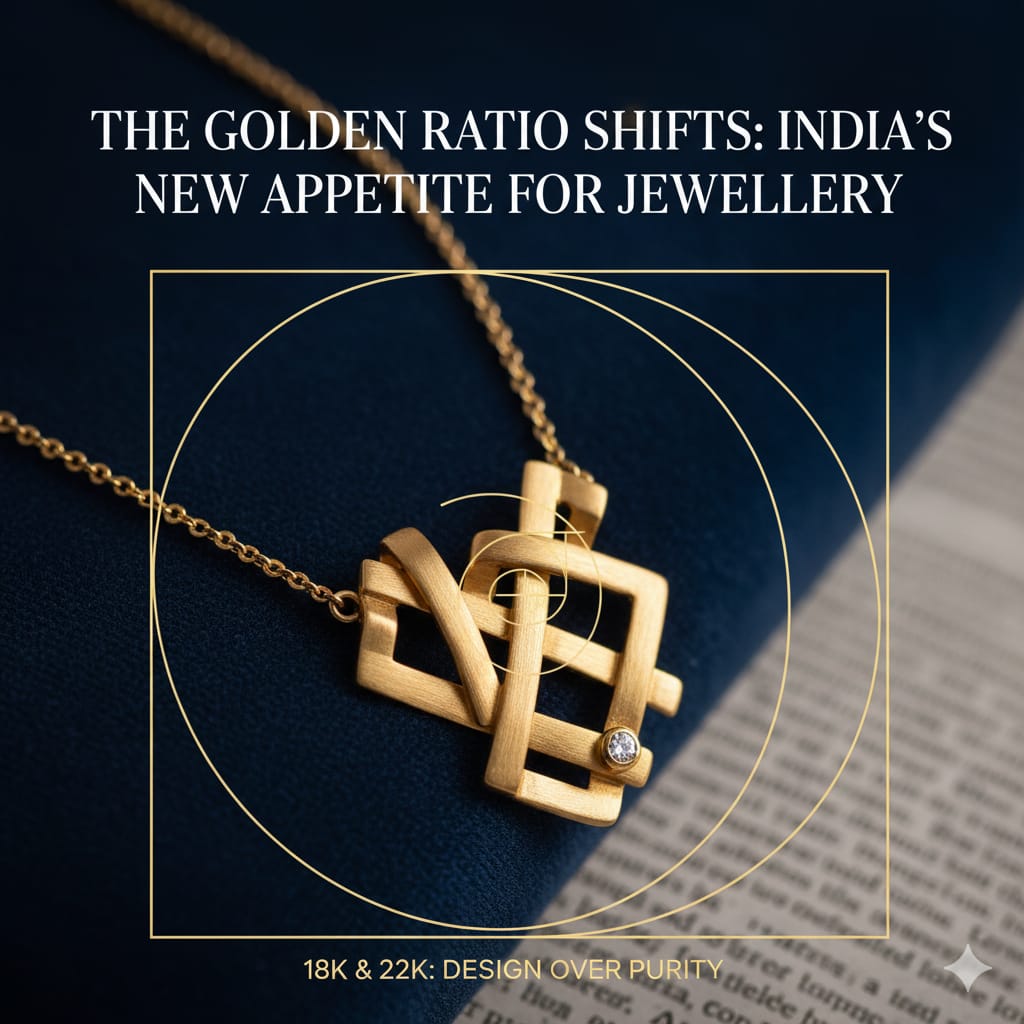
Gold has always held a sacred and emotional place in Indian hearts. From weddings and festivals to savings and status, the metal has long symbolized prosperity and stability. But in recent months, a quiet shift has taken place in the country’s glittering jewellery markets. As prices of 24-karat gold soared to record highs, crossing ₹1,26,028.89 per 10 grams, buyers have begun rethinking what “value” truly means when it comes to gold. The result is a growing preference for lower-purity gold jewellery, such as 18-karat and 14-karat ornaments, instead of the traditional 22-karat pieces.
This shift is not merely a story about rising prices; it is a reflection of changing consumer priorities and the evolving idea of luxury. For generations, Indian families saw gold as a store of wealth—something that could be sold or pledged in times of need. The higher the purity, the greater the security. But today’s buyers, especially younger consumers, are treating gold more as fashion and less as finance. With lifestyle-driven purchases replacing traditional investment motives, purity is no longer the only factor that matters.
Jewellery retailers across the country are witnessing this transition firsthand. Large chains such as Tanishq and Senco Gold have reported a rise in demand for lightweight and lower-karat designs. According to recent industry data, 18-karat jewellery is now gaining acceptance in urban and semi-urban markets, where consumers value affordability and design flexibility. Many prefer buying two 18-karat pieces instead of one 22-karat ornament, balancing appearance with budget.
The changing trend also reveals a larger story about India’s economic and cultural mood. For most households, gold buying during festive seasons like Diwali and Akshaya Tritiya is both a ritual and a financial decision. However, with gold prices climbing steadily, many families are opting for smaller quantities or lighter ornaments rather than skipping the purchase entirely. This choice reflects both resilience and adaptation—two qualities deeply woven into India’s consumer behavior.
Experts suggest that the popularity of 18-karat jewellery is also driven by modern design trends. Lower purity gold allows jewellers to craft intricate patterns and incorporate diamonds or other precious stones without compromising durability. The younger generation, influenced by social media and fashion culture, finds these designs more versatile and stylish for everyday wear. They are no longer buying gold only for the locker but for the mirror too.
Another important factor behind the trend is financial awareness. Urban consumers have become more conscious of diversification. Rather than locking all savings into high-value gold assets, many prefer to balance investments across mutual funds, digital gold, and real estate. Lower-karat jewellery, being more affordable, allows them to enjoy the pleasure of owning gold while keeping liquidity intact.
Industry experts point out that this shift is not temporary. Even in the global market, lower-karat jewellery has been the norm for years. In Western countries, 14-karat and even 10-karat pieces are standard, primarily due to affordability and design variety. India is now slowly aligning with that global pattern, while still retaining its cultural reverence for gold.
However, there are concerns that come with this transition. Consumers need to be aware that lower purity gold contains a higher proportion of other metals such as copper, silver, or nickel. This affects resale value and long-term investment potential. Jewellery that looks dazzling on the outside may not fetch a high return later if sold for cash or exchanged. Buyers must therefore be careful about hallmarking and certification. The Bureau of Indian Standards (BIS) has made hallmarking mandatory for all gold sold in the country, but awareness remains uneven. Before purchasing, customers should check the hallmarking centre’s identification number, karatage, and jeweller’s code on each ornament.
Moreover, the surge in lower-purity demand also invites the risk of adulteration and mislabelling. Unscrupulous sellers may attempt to pass off substandard gold as higher quality. Hence, customers should buy only from trusted jewellers and insist on digital receipts that specify purity and weight.
Despite these challenges, jewellers remain optimistic. They view this transformation as a necessary modernization of India’s gold culture. Many brands are now launching dedicated 18-karat collections and offering buyback guarantees to assure customers. Some have even introduced exchange policies that allow consumers to upgrade purity later by paying the difference.
In essence, what we are witnessing is a democratization of luxury. Gold is no longer confined to weddings or special occasions; it is becoming part of daily adornment and self-expression. The purity may have reduced, but the emotional attachment remains intact. In a way, India’s love for gold has simply adapted to the realities of a volatile economy and the aspirations of a younger, more style-conscious generation.
The message for consumers is clear: buy smart, not just shiny. Understand what you are purchasing, check for hallmarking, and know your purpose—whether it is adornment, investment, or both. Gold in any form continues to hold cultural and emotional value, but informed choices can ensure that your purchase retains both its glitter and worth.
As prices continue to rise, the future of India’s gold market may not lie in how pure the metal is, but in how purely it reflects the changing desires of its people.





.jpeg)






.jpeg)


.jpeg)




.jpeg)